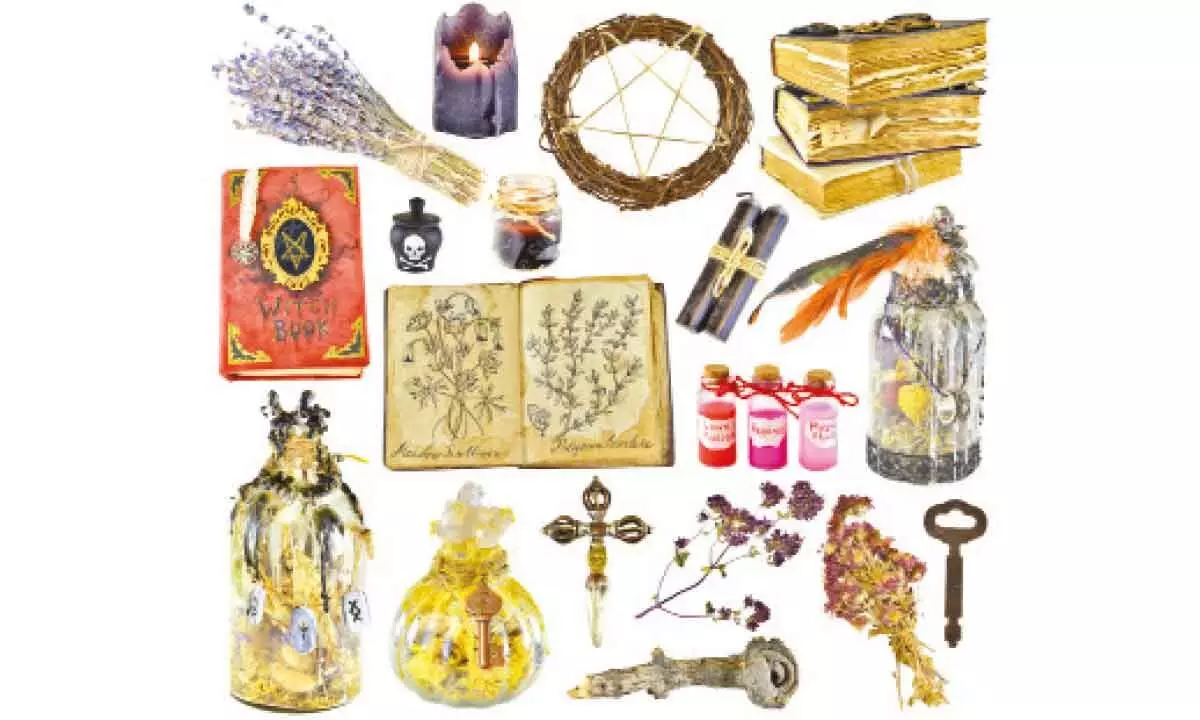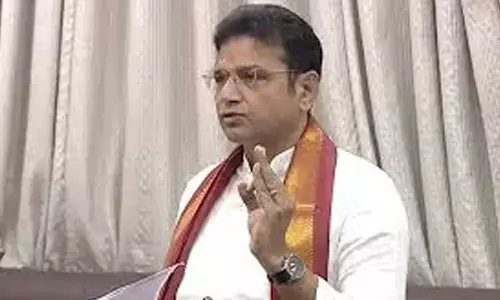Celebrating magical moments

Magic and magicians are no longer associated with the realm of religion or fantasy alone. The practice of the art has now come to be accepted as a serious profession. So much so, indeed, that there is an International Magicians Society whose objective is to help promote, and preserve, the art, and to provide a format where the members can share secrets and ideas. The Crown Jewel of the Society is the Magic Academy where magicians study to get their Doctorate in magic
The art of magic finds mention in several mythologies and scriptures of several major civilisations of the world.
Greek mythology, for instance, refers to Hecate, an extremely powerful sorceress, who can release powerful energy blasts and read thoughts, apart from possessing the ability to alter the forms of people and objects. She is often invoked by mortal magic users in the casting of spells.
The Vedas refer to 'Pratyangira' as the Goddess of Shakthi, worship dedicated to whom is performed, at many places, for the welfare of the people and for eliminating the influence of evil forces.
Magic is also widespread in Islamic culture and Muslim communities throughout the world. Sorcery, divination and occultism are commonly taken resort to, both in order to cause harm as also for beneficial effects.
Views on magic vary widely among the various nominations of Christianity with many condemning it as satanic and opening the way for demonic possession, while others simply view it as entertainment.
Magic and mantic arts are endemic in Chinese life and prominent in the religions of China, both in popular religion and in Buddhism and Daoism. Chinese mythology includes many varied myths from regional and cultural traditions. Much of the mythology involves exciting stories, full of fantastic people and beings, with the use of magical powers often taking place in an exotic place or time. Chinese mythology has, in the past, been believed to be a factual recording of history.
Kotodama, or kototama, refers to the Japanese belief that mystical powers dwell in words and names. Meaning, among other things, "soul of language," or "magic word," the notion presupposes that sounds can magically affect objects, and that ritual word usages can influence our environment, body, mind, and soul.
In the realm of fiction, 'Mandrake the Magician,' created in 1934, is a well-known syndicated, newspaper comic strip, very much alive, and kicking, even today. The interesting part, of the theme underlying the episodes, is that Mandrake, though publicly seen as a stage magician, spends most of his time fighting crime and combating supernatural entities.
Likewise, 'Wiz' or the 'Wizard of Id,' the title character and the royal magician in the comic strip series with the same name, deals with the goings-on, of the rundown, and oppressed, mythical kingdom of Id. It follows people from all corners of the kingdom, but concentrates on the court of a tyrannical, dwarfish monarch known only as "the King." The strip's humor occasionally satirizes modern American culture. He is smart but sarcastic, good-natured but cynical, and is constantly dominated by his wife, Blanch.
Another internationally popular fictional character is the Druid Getafix, in the highly popular 'Asterix and Obelix' episodes, imbibing whose magic potion infuses superhuman strength. The potion of Getafix includes ingredients, such as mistletoe, fish, rock oil, clovers of a tamarind, tree, and lobster, among others. Getafix, however, belongs to the modern era. Also in the realm of fiction, but of medieval vintage, are the witches in Shakespeare's Macbeth, who concoct a potion by "boiling and baking" a combination of strange and exotic ingredients including "fillet of a fenny snake, eye of newt and toe of frog."
Another, and far more well-known, fictional character, whom one recollects in the context of magic, is Aladdin, whose magic lamp, when rubbed, caused the appearance of a benign genie who offers to grant three wishes, out of gratitude for being set free.
Yet another colourful, and frolicsome, fictional being, is the Magic Dragon in the animated television song 'Puff, the Magic Dragon.' The song tells the story of an ageless dragon, Puff, and his playmate, Jackie Paper, a little boy who grows up and moves on from the adventures of childhood, leaving a forlorn Puff on his own. The entire story is set in a fictional land by the sea, called 'Honah Lee.'
Also belonging to the world of fantasy and fiction are the characters of Mary Jane and Sniffles, in the Looney Tunes/ Merry Melodies comics. Jane has the power to shrink down to smaller mouse size, by sprinkling herself with magic sand and chanting some magic words, in order to embark on an adventure of fun and frolic in Toyland.
In a closely related area, namely that of the celluloid world, and as long as ego as in the early 1950s, the Telugu movie, 'Maya Bazaar,' featured many scenes involving magic. The absence of modern technology notwithstanding, and without the aid of electronic instruments, the legendary photographer Marcus Bartley had the audience spellbound, with a brilliant display of photographic skills.
Magic and magicians are no longer associated with the realm of religion or fantasy alone. The practice of the art has now come to be accepted as a serious profession. So much so, indeed, that there is an International Magicians Society whose objective is to help promote, and preserve, the art, and to provide a format where the members can share secrets and ideas. The Crown Jewel of the Society is the Magic Academy where magicians study to get their Doctorate in magic.
If the strikingly characteristic cap, and the wand, are a standard part of the modern magicians' equipment, it was the carpet, and broomstick, that the wizards and witches of yore used. The fictional magic carpet, also called a flying carpet, was typically used as a form of transportation, to distant destinations, in no time at all. A well-known example is that of Solomon's carpet, reportedly made of green silk with a golden weft, which sailed through the air so quickly that Solomon "breakfasted at Damascus and supped in Media."
Not unlike the modern-day jet setter having breakfast, lunch and dinner in three different countries and on the same day, thanks to supersonic air travel and time differences!
In a field dominated by men, it was Adelaide Herrmann, who, while not enjoying the same recognition or fame, as Harry Houdini did, still earned the sobriquet of the 'Queen of Magic,' and was the star, of the realm of magic, for over four decades, from the 1880s to the 1920s.
Pandit Jawaharlal Nehru, the first Prime Minister of independent India, was, himself, no mean magician. The story, probably apocryphal, is told about a royal feast he once attended in Buckingham Palace in London, along with a cabinet colleague. Fascinated by the dazzling cutlery on the table, the minister pocketed spoon, which Nehru noticed. After dinner, Nehru called the attention of the invitees and offered to perform a trick. He pocketed a silver spoon and, after chanting some seemingly magic words, invited the audience to look in the minister's pocket!
(The writer is formerly Chief Secretary, Government of Andhra Pradesh)
















